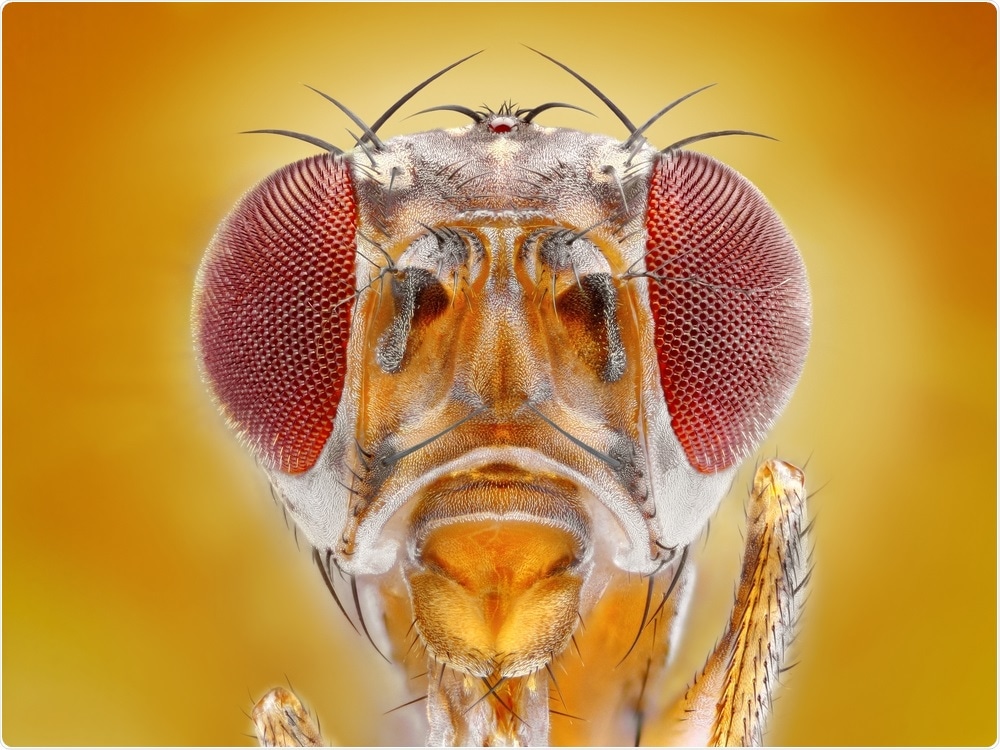
Are fruit fly 'avatars' the next step in personalized medicine?
Researchers have created fruit fly “avatars” that have helped to guide treatment for a man who had terminal colon cancer. The team genetically engineered flies that had the same mutations as the man’s tumor and then tested different drug combinations to see which ones kept the flies alive. Doctors eventually settled on a drug combination that was the most effective and administered it to the man.
 Tomatito | Shutterstock
Tomatito | ShutterstockStudy author Ross Cagan says the man died after about three years, but that this was likely to have been much longer than he would have survived if taking standard treatments.
Cancer is often thought of as many diseases rather than one, with every tumor having a different set of mutations. This means that while one treatment may work for one person, it may fail to be effective for another person. The most challenging part for doctors is deciding which treatment will be the most effective at fighting off a specific tumor.
Personalized cancer medicine involves looking at an individual’s genome and cancer growth to help find more effective ways of screening for, preventing and treating tumors.
By comparing the genomes of healthy versus cancerous cells, doctors can tailor treatments to a patient’s individual needs, which may increase efficacy and reduce the side effects that occur with standard treatments.
Testing drugs on patient ‘avatars’
One approach that doctors are now using to establish the best treatment options is the testing of various drugs on animals or “avatars” that have been engineered to have the same cancer that a patient has.
One option is to create Drosophila fruit flies that have the same genetic mutations as a person’s tumor, which is what Cagan and team have now done.
The Drosophila fruit fly is a particularly useful animal model and has become the main invertebrate used in developmental genetics studies.
Why fruit flies?
Many features of Drosophila make it ideal for such studies, with one main benefit being that there are no ethical issues to consider, like there are when using animals such as monkeys.
Other advantages are advantage are the flies’ small size and short life cycle, which mean large quantities of them can be produced in multiple rows of test tubes in a very short space of time. An embryo hatches just 24 hours following fertilization and then undergoes three larval stages before maturing into an adult fly at around ten days after fertilization.
The female can generate up to 1500 eggs across its lifetime, thereby providing a continuous supply of new flies. Once researchers have the desired number of mature flies, robotic equipment can then be used to test hundreds of drug combinations on them.
The small size of the flies also makes them very easy to maintain and many flies can be produced and tested in small laboratories that are restricted by limited time and funding.
The simple genetics also make this fly an ideal animal model. It only has four pairs of chromosomes, meaning its genes can be mapped easily, which is one of the reasons it was first used for these experiments.
Getting ‘the right drug’ straight away
In the current study, the man’s cancer had already spread and become resistant to certain therapies. Genetic sequencing showed that the tumor contained at least nine mutations, which the researchers then replicated in flies’ gut cells, before breeding 300,000 of them.
Next, they developed a robotic system that tested 121 existing drugs on the flies, including medications for both cancer and other illnesses.
Several drug combinations not only prevented death, but also slowed tumor growth in the flies’ guts. Eventually, doctors decided on a cancer drug and an osteoporosis treatment that was the most effective combination with the best-predicted safety.
Although the doctors think this combination prolonged the man’s survival, the approach was not a cure. The man developed resistance to the treatment after 11 months and the tumor sequencing did not identify which mutations had been involved in conferring this resistance.
Cagan says animal avatars are needed since although cancer drugs for single mutations do exist, it is not yet possible to predict how a tumor will respond: “We don’t yet know the best drug combinations for someone with nine tumour mutations.”
Currently, mouse avatars are being developed at some universities and one firm already provides these to guide treatment for cancer patients. A biopsy of the patient’s tumor is sent to the firm and the tumor cells are implanted into mice. Once drugs have been tested on the mice a few months later, the results are sent to the patient’s doctor.
However, fly avatars have advantages over mice avatars; they are particularly easy to screen and their use means ethical concerns about animal research are not an issue.
Rita Fior from the Champalimaud Centre for the Unknown in Portugal says the various models all have their advantages and disadvantages and no large-scale trial has yet determined whether any of them actually increase patient survival more than if a doctor had just used their own judgment.
Journal reference
Bangi, E., et al. (2019). A personalized platform identifies trametinib plus zoledronate for a patient with KRAS-mutant metastatic colorectal cancer. Science Advances.doi.org/10.1126/sciadv.aav6528.























.png)









No hay comentarios:
Publicar un comentario